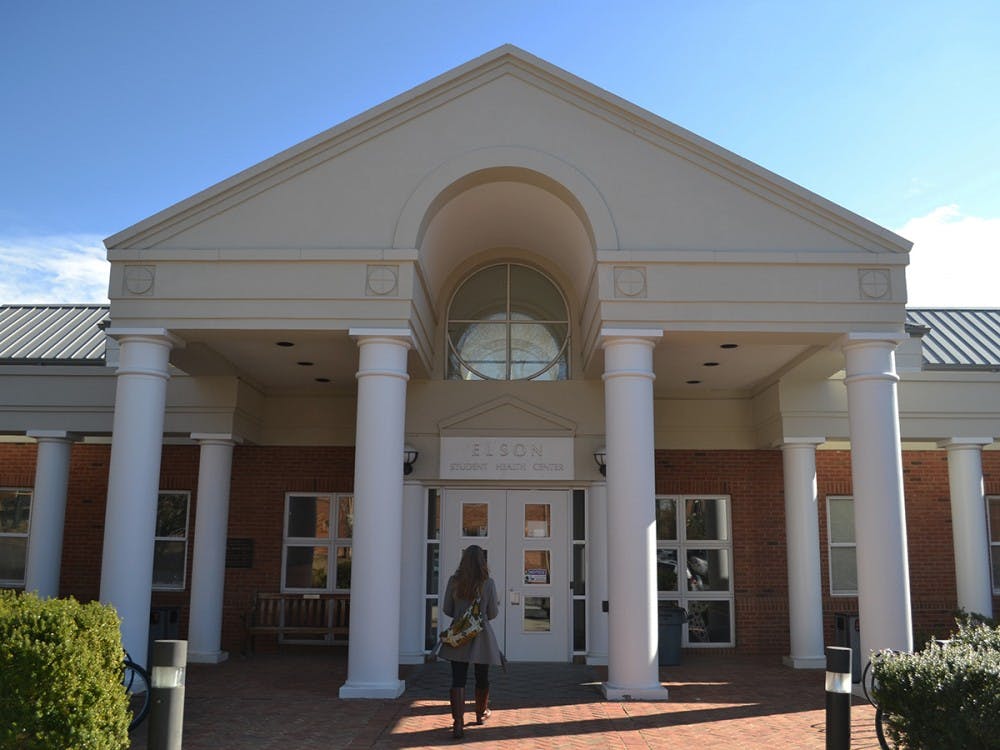The Student Disability Access Center has been implementing changes to make Grounds more accessible for all students, particularly improving its web resources and establishing its presence.
The SDAC is utilized by students with learning or physical disabilities and other accommodation needs. After completing an intake and eligibility process, students are able to use the center as a resource based on their unique circumstances — whether that be academically, physically or emotionally for example.
“We do partner with colleagues around the University just depending on what’s needed,” Director Barbara Zunder said. “We work very closely with Housing and Residential Life, we work with dining services, we work with the Provost office quite a bit, Student Financial Services ... It really is determined based on what the student needs.”
The SDAC is currently undertaking new initiatives, such as conferences focused on accessibility improvements and faculty workshops to increase awareness for University members with disabilities. A recent push is in the realm of its online presence.
In January of last year, the SDAC debuted an online system, allowing students to utilize its resources at any time. This system features letter notifications that can be automatically sent to professors detailing the accommodations required for a student.
“They changed the system in the past year or two, where it’s all online, so I can go in and I can collect all the accommodations that I want for a specific class, and then just click a button and it will send those letters to my professors,” fourth-year College student Michelle Miles said.
The Accessibility Partners @ UVA — comprised of the SDAC, the Coordinator of Academic Accessibility in the Provost Office and the Office for Equal Opportunities and Civil Rights — plans to announce an online system called “Accessibility at UVA” this September. According to Zunder, this platform will allow all people — students, faculty and visitors to Grounds — to access accessibility-related information, helping the SDAC increase its digital presence.
The SDAC also plans to partner with other institutions to improve accessibility in higher education. One of these conferences is happening this September, and the University is hosting another later this year.
In addition to these ongoing projects, Miles has witnessed more accessible options appearing on Grounds in recent years. In a meeting her first year with Wynne Stuart, the University’s associate provost for academic support and classroom management, she described issues she had on Grounds.
“My first year, I wrote everything down in a little notebook — everything that I came across that was a problem for me I would write down,” Miles said. “Over the next year or two, I noticed that a lot of those problems were changed.”
Many of these issues referred to sidewalks, which can sometimes be rough and difficult for wheelchairs to easily navigate.
“The bricks in front of Clark [Hall], they used to be so rough, and I think this past year they just completely redid that whole area so those bricks are a lot smoother and nicer to go on,” said Miles, who uses a motorized wheelchair.
Further, the SDAC utilizes an online tool called Report a Barrier, established in April of 2016, which has made it easier for students with disabilities to describe report inaccessible areas on Grounds.
“Usually, I use it when there’s like one of the automatic door openers that I use isn’t working,” Miles said. “And I’ve found that every time that that has happened, it’s been fixed.”
The Report a Barrier tool can be used not only for mobility issues, but also for attitudinal, policy, academic or online barriers — any type of barrier that may hinder accessibility.
The SDAC is also part of the Barrier-Free Access Committee — a collaboration between many departments at the University, such as Housing and Residence Life, Transportation and the Provost Office — whose efforts have worked to make ramps on the Lawn a reality, despite minor pushback from the Jeffersonian Grounds Initiative. The ramps, which are currently being installed between the tiers of the Lawn, add wheelchair accessibility to the UNESCO World Heritage Site.
“There are no rules for UNESCO World Heritage Sites needing to be accessible,” Miles, who works closely with the BFAC, said. “It’s up to U.Va. and all [of] its committees whether they’re going to approve all of that, and they have.”
Currently, multiple organizations on Grounds — such as the Disability Advocacy and Action Committee, which has its own working student group — operate both with and independently of the SDAC. However, forming a community around and consisting of people who have disabilities or require accommodation is difficult, according to Miles.
“Disabilities are so hard to form a community around because they’re so different for everybody,” Miles said. “It’s definitely grown more since I was a first-year.”
Regardless, the atmosphere at the University has been welcoming, according to Miles.
“Before I even committed to coming to U.Va., [the SDAC] said ‘U.Va. is a historic campus, and we have a lot of shortcomings when it comes to accessibility, but … if you have the drive to be here … and if you love the school as much as we do, we want to make you as welcome here as possible,’” Miles said. “No other school gave me that kind of advice.”
From an administrative perspective, Zunder has also witnessed progress and has been impressed by the University’s willingness to adapt.
“People really do want to do the right thing when it comes to accessibility,” Zunder said. “A lot of times I think that these efforts are huge and they’re daunting and they take time. Sometimes it just takes time to make big change, but change is happening. And even the change that I’ve seen over the past three years has been huge.”







